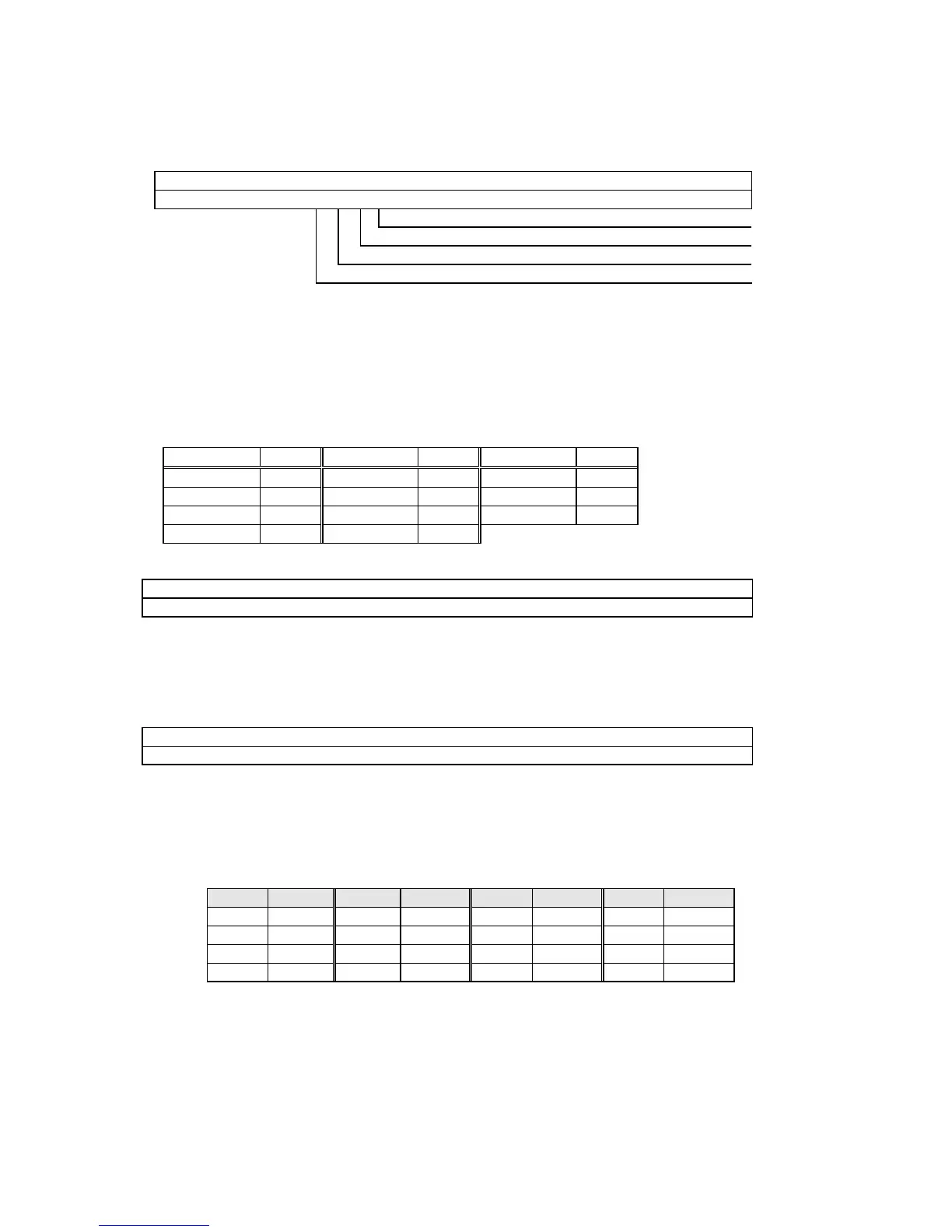3-113
NSF, NSC, NSS:
NSF, NSC, NSS are nonstandard unit frames. The first three bytes of the FIF are specified by T.30. The
subsequent digits are individually determined by the manufacturers. The first byte refers to the country
code. The second byte is a spare; it is 00 (hex) presently. The third byte is the manufacturer code.
TxFrame RxFrame D A T A
NSF 20 00 00 45 00 00 00 00 00 00 00 00 00 00 00 00 00 00 00
The third byte is the manufactures code
The second byte is spare; currently set at 00H
The first byte indicates the country code
Indicates the NSF code
CSI, CIG, TSI:
CSI, CIG, TSI is composed of a maximum 20– digit number comprising the country code, area code, and
subscriber’s telephone number. In the printed results, printing starts from the least significant digit of the
telephone number. The following code table lists the codes used to make the 20–digit number and their
value. Below the code table is a CSI example.
Code Value Code Value Code Value
30 0 34 4 38 8
31 1 35 5 39 9
32 2 36 6 20 Space
33 3 37 7
An example telephone number of 098–765–4321 is represented as:
TxFrame RxFrame D A T A
CIS 30 39 38 37 36 35 34 33 32 31 20 20 20 20 20 20 20 20 20 20 20
DIS, DTC, DCS:
DIS, DTC, DCS frames define the standard CCITT capabilities of the two units such as transmit and
receive speeds, coding methods, printer speed, etc.
TxFrame RxFrame D A T A
DIS 00 EF F9 C4 80 81 80 00
The bits are in the following order:
( 8 7 6 5 4 3 2 1) (16 15 14 13 12 11 10 9) (24 23 22 21 20 19 18 17)
(32 31 30 29 28 27 26 25) (40 39 38 37 36 35 34 33) (48 47 46 45 44 43 42 41)
(56 55 54 53 52 51 50 49) (64 63 62 61 60 59 58 57)
Table for hexadecimal digit to binary number:
Hex Binary Hex Binary Hex Binary Hex Binary
0 0000 4 0100 8 1000 C 1100
1 0001 5 0101 9 1001 D 1101
2 0010 6 0110 A 1010 E 1110
3 0011 7 0111 B 1011 F 1111
So in the above list the first "EF" is "11101111"(bit order 8 7 6 5 4 3 2 1)

